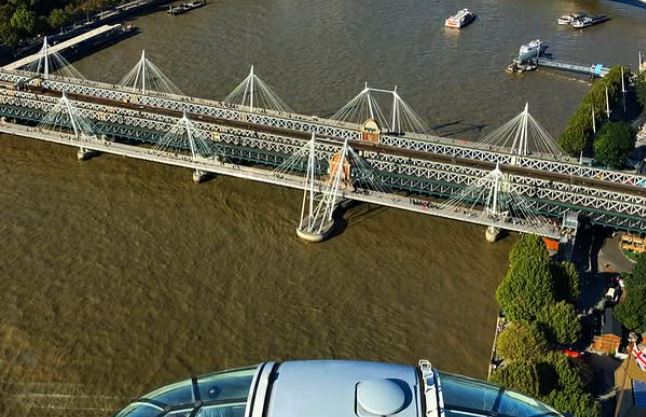Network Rail has commenced a comprehensive refurbishment of the 161-year-old Hungerford Railway Bridge, a vital structure that carries trains over the River Thames between the South Bank and London Charing Cross station. This initiative aims to preserve the bridge’s structural integrity and historical significance, with completion targeted by the end of winter 2028.
Historical Background
The original Hungerford Bridge, a suspension footbridge designed by renowned engineer Isambard Kingdom Brunel, opened in 1845. It connected Hungerford Market, located where Charing Cross station now stands, to the South Bank. In 1864, the suspension bridge was replaced by the current railway bridge, designed by Sir John Hawkshaw, to facilitate the extension of the South Eastern Railway into the newly established Charing Cross station. The chains and ironwork from Brunel’s bridge were repurposed for the Clifton Suspension Bridge in Bristol.
Refurbishment Details
The refurbishment project focuses on restoring the bridge’s wrought iron lattice girders, which date back to its 1864 construction. Network Rail emphasizes the importance of maintaining such historical infrastructure to ensure railway services’ continued safety and reliability. The restoration will retain all original metalwork, with engineers undertaking tasks such as painting and testing truss pins to enhance durability.
Project Timeline and Phases
The refurbishment is structured in two main phases:
Phase One (January 2025 – January 2026): This initial phase concentrates on the spans located on the South Bank and the southern side of the Thames. Work will be conducted during periods that minimize disruption to train services, including overnight sessions.
Phase Two (January 2026 – Winter 2028): The subsequent phase addresses the remaining spans across the river. During this period, Londoners can anticipate occasional weekend closures, with specific dates to be announced as the project progresses.
Environmental Considerations
To mitigate environmental impact, Network Rail plans to utilize barges for delivering materials and removing waste, docking at Surrey Pier. This approach is expected to eliminate the need for approximately six truck deliveries through central London each week, thereby reducing traffic congestion and associated pollution.
Significance of the Project
David Davidson, Network Rail’s Kent Route Director, highlights the dual privilege and challenge of stewarding Britain’s Victorian-era railway bridges. He underscores the necessity of such refurbishments to protect these structures from corrosion and weather-related damage, ensuring their functionality for future generations.
Final Thoughts
The ongoing refurbishment of Hungerford Bridge represents a critical investment in London’s transportation infrastructure and heritage preservation. By undertaking this meticulous restoration, Network Rail aims to maintain the bridge’s historical essence while adapting it to contemporary safety and operational standards. As the project unfolds, commuters and residents can look forward to a revitalized bridge that continues to serve as a vital link across the Thames.
